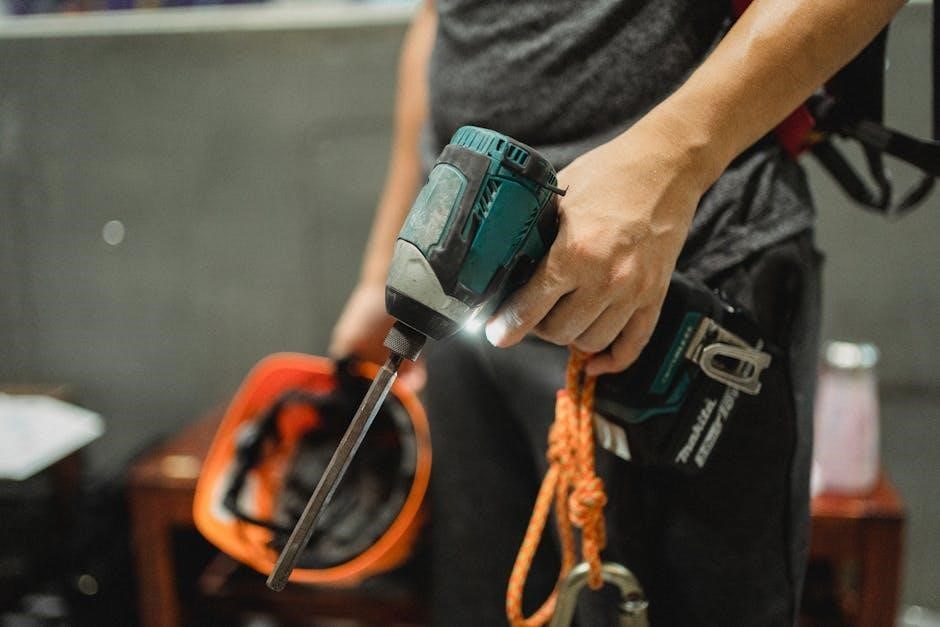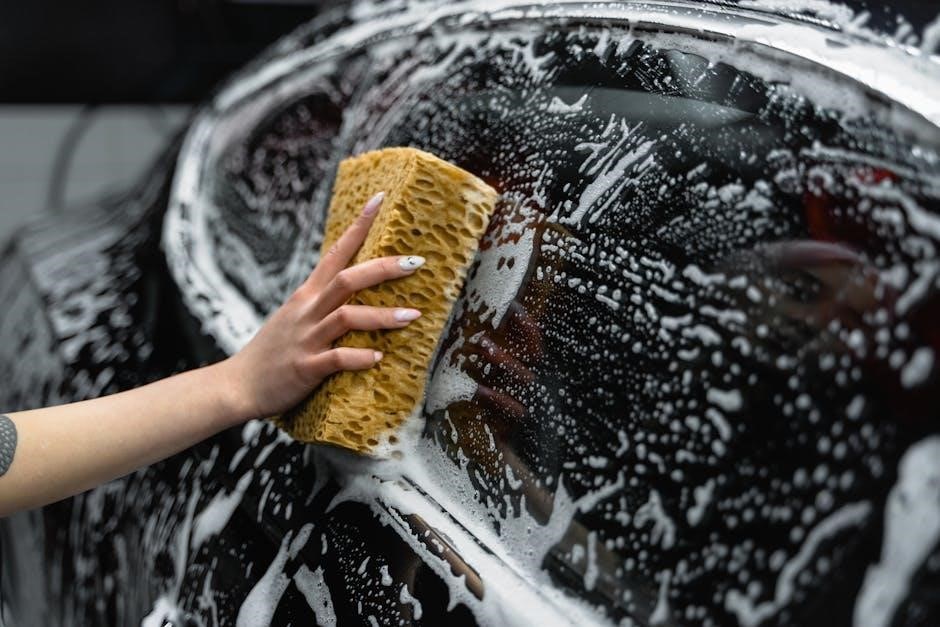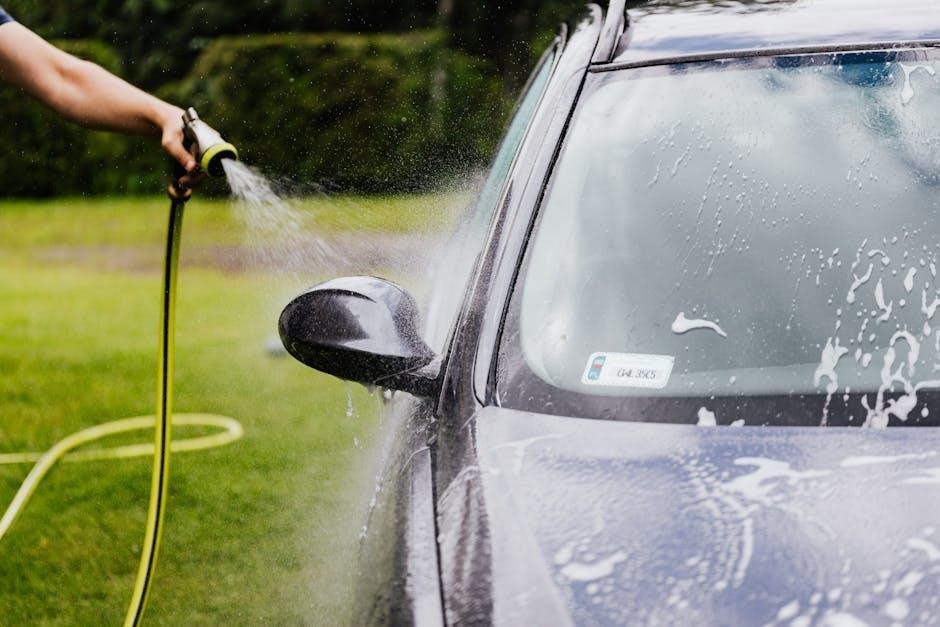The Piper Cherokee Service Manual is a comprehensive guide essential for maintenance, repair, and operation of the aircraft, providing detailed instructions and illustrations for optimal performance.
Overview of the Piper Cherokee Aircraft
The Piper Cherokee is a widely recognized single-engine aircraft known for its reliability and performance, popular among both private pilots and flight training schools. Designed by Piper Aircraft, the Cherokee series includes models like the PA-28-140, PA-28-150, and PA-28-180, each offering distinct capabilities to suit various flying needs. The aircraft is celebrated for its low-wing design, which provides excellent visibility and stable handling characteristics. Equipped with a robust airframe and reliable Lycoming engines, the Cherokee ensures a smooth and efficient flight experience. Its spacious cabin and comfortable seating accommodate passengers comfortably, making it ideal for both training and recreational flying. The Cherokee’s enduring popularity stems from its durability, ease of maintenance, and adaptable nature, catering to a broad range of aviation enthusiasts and professionals alike.
Importance of the Service Manual for Maintenance and Repair
The Piper Cherokee Service Manual is indispensable for ensuring the aircraft’s airworthiness and longevity. It provides detailed instructions for routine maintenance, troubleshooting, and repairs, enabling technicians to address issues effectively. The manual includes specifications, torque values, and safety protocols, ensuring compliance with aviation standards. Regular maintenance schedules outlined in the manual help prevent mechanical failures, while step-by-step repair procedures guide technicians through complex tasks. Additionally, the manual serves as a critical resource for diagnosing and resolving common issues, such as fuel system malfunctions or electrical system faults. By adhering to the manual’s guidelines, owners and mechanics can maintain the Cherokee’s performance, safety, and reliability, making it a go-to reference for both novice and experienced aviation professionals. Its comprehensive nature ensures that all aspects of the aircraft’s upkeep are covered meticulously.

Structure and Content of the Service Manual
The manual is structured to provide easy access to information, with detailed illustrations, step-by-step instructions, and organized sections covering maintenance, repairs, and system-specific guidance for the Piper Cherokee.
General Layout and Organization of the Manual
The Piper Cherokee Service Manual is meticulously organized to ensure clarity and accessibility. It begins with an introduction outlining its purpose and scope, followed by sections dedicated to airworthiness limitations, handling, servicing, inspections, and structural components. Each chapter is logically arranged, with detailed subsections addressing specific systems such as fuel, electrical, and avionics. The manual incorporates clear headings, bullet points, and numbered lists to enhance readability. Illustrations and diagrams are strategically placed to complement textual instructions, aiding technicians in understanding complex procedures. Additionally, the manual includes a comprehensive table of contents and an index for quick reference, making it an indispensable resource for both novice and experienced maintenance personnel. This systematic approach ensures that users can efficiently locate and apply the necessary information to maintain the aircraft’s safety and performance.
Key Sections and Chapters Covered
The Piper Cherokee Service Manual is divided into key sections that cover all aspects of aircraft maintenance and operation. The manual includes chapters on airworthiness limitations, handling and servicing, inspections, and structural components. Detailed sections focus on engine maintenance, propeller inspection, and fuel system servicing. Additionally, chapters on avionics, electrical systems, and flight control surfaces provide comprehensive guidance. The manual also addresses landing gear inspection, hydraulic and pneumatic system maintenance, and emergency procedures. Each section is supported by illustrations, step-by-step instructions, and troubleshooting tips, ensuring technicians have access to the information needed for safe and effective maintenance. This organization makes it easy to locate specific procedures, making the manual an essential tool for both routine upkeep and complex repairs. The content is tailored to meet the needs of professionals and DIY enthusiasts alike, ensuring optimal aircraft performance and safety.
Detailed Illustrations and Step-by-Step Instructions
The Piper Cherokee Service Manual is renowned for its detailed illustrations and clear, step-by-step instructions, which are instrumental in guiding technicians through complex maintenance tasks. High-quality diagrams provide visual clarity, helping users identify components and understand their relationships. Each procedure is broken down into manageable steps, ensuring accuracy and reducing the risk of errors. The manual’s visual aids, such as exploded views and wiring diagrams, complement the textual instructions, making it easier to perform repairs and inspections. These resources are particularly useful for less experienced mechanics, offering a clear path to completing tasks successfully. By combining detailed visuals with precise instructions, the manual enhances efficiency and confidence in maintaining the Cherokee’s optimal condition. This approach ensures that even intricate processes are accessible and straightforward to execute.

Maintenance Guidelines and Procedures
The Piper Cherokee Service Manual outlines essential maintenance guidelines and procedures to ensure aircraft safety and performance, covering routine tasks and critical inspections.
Routine Maintenance Tasks and Schedules
The Piper Cherokee Service Manual provides a detailed schedule and procedures for routine maintenance to ensure the aircraft’s optimal performance and safety. It includes pre-flight checks, fuel system inspections, and engine lubrication tasks. The manual outlines specific intervals for inspections and servicing, helping technicians maintain a consistent maintenance routine. With comprehensive schedules, the guide ensures that all critical components are monitored and serviced regularly. Adherence to these schedules helps prevent potential issues and ensures compliance with aviation standards. Additionally, the manual offers troubleshooting tips and common repair procedures, making it an indispensable resource for both experienced and novice technicians. By following the outlined maintenance tasks and schedules, operators can maintain the Cherokee’s reliability and extend its service life effectively.
Engine Maintenance and Overhaul Procedures
The Piper Cherokee Service Manual dedicates a detailed section to engine maintenance and overhaul procedures, ensuring optimal performance and longevity. It provides step-by-step instructions for routine inspections, part replacements, and specific torque specifications for engine components. The manual emphasizes regular checks of oil levels, spark plugs, and fuel injection systems to prevent wear and tear. Troubleshooting guides are included to address common engine issues, such as rough running or low power output. Additionally, the manual outlines the process for a complete engine overhaul, including disassembly, inspection, and reassembly procedures. Adherence to these guidelines ensures compliance with aviation standards and maintains the aircraft’s airworthiness. By following the manual’s engine maintenance protocols, operators can maximize the Cherokee’s engine reliability and extend its operational lifespan.
Propeller Maintenance and Inspection
The Piper Cherokee Service Manual provides detailed guidance on propeller maintenance and inspection procedures to ensure optimal performance and safety. Regular inspections are emphasized, including checks for blade damage, erosion, and corrosion. The manual outlines steps for lubricating the propeller hub and spinner, as well as balancing the blades to maintain smooth operation. Specific instructions are given for troubleshooting common issues, such as vibration or unusual noise, which may indicate misalignment or wear. Additionally, the manual covers procedures for propeller removal and reinstallation, ensuring proper torque specifications and alignment. Compliance with these maintenance protocols is critical to maintaining the aircraft’s airworthiness and operational efficiency. By adhering to the manual’s guidelines, operators can extend the propeller’s lifespan and ensure reliable performance during flight.
Fuel System Servicing and Inspection
The Piper Cherokee Service Manual provides detailed procedures for servicing and inspecting the fuel system to ensure safe and efficient operation. Regular maintenance tasks include cleaning and inspecting fuel tanks, checking for leaks, and verifying the proper function of fuel valves. The manual emphasizes the importance of using a fuel stick to accurately measure fuel levels and ensuring the fuel selector valve operates smoothly. Specific instructions are provided for inspecting and replacing fuel filters, as well as troubleshooting common issues like fuel leaks or contamination. Additionally, the manual outlines steps for servicing the fuel shutoff valve and ensuring proper alignment of fuel lines. By following these guidelines, operators can maintain the integrity of the fuel system, prevent potential hazards, and ensure compliance with safety standards. Regular servicing is critical to maintaining the aircraft’s airworthiness and operational reliability.

Airframe and Structural Components
The Piper Cherokee Service Manual provides detailed guidance on airframe and structural component maintenance, ensuring the aircraft’s integrity and safety through regular inspections and timely repairs.
Inspection and Maintenance of Airframe Components
The Piper Cherokee Service Manual emphasizes rigorous inspection and maintenance of airframe components to ensure structural integrity and safety. It outlines procedures for visual inspections, including checks for corrosion, dents, and cracks on wings, fuselage, and control surfaces. Detailed torque values for bolts and rivets are provided to maintain proper tension and prevent fatigue. Lubrication schedules for moving parts, such as ailerons and flaps, are included to ensure smooth operation. The manual also covers repair methods for damaged components, referencing approved materials and techniques. Regular maintenance intervals are specified to prevent wear and tear, ensuring the aircraft remains airworthy; By following these guidelines, technicians can identify and address issues early, preventing costly repairs and enhancing overall flight safety. This section is critical for maintaining the Cherokee’s durability and performance over time.
Common Issues and Repairs for Structural Parts
The Piper Cherokee Service Manual addresses common structural issues and provides detailed repair procedures to ensure the aircraft’s integrity. One prevalent issue is corrosion on metal components, particularly in high-moisture areas like fuel tanks and wing attachments. The manual offers methods for detecting corrosion through visual inspections and dye penetration tests. Another common problem is fatigue cracks in wing spars and landing gear components, which require immediate attention to prevent propagation. The manual outlines step-by-step repair processes, including rivet replacement and spar reinforcement. Additionally, it provides guidelines for straightening bent components and replacing damaged skin panels. Troubleshooting techniques and torque specifications are included to ensure repairs meet safety standards. By addressing these issues proactively, technicians can extend the aircraft’s lifespan and maintain its structural reliability. Regular adherence to these repair protocols is essential for safe and efficient operation.
The Piper Cherokee Service Manual emphasizes corrosion prevention as critical for maintaining aircraft longevity. It recommends regular inspections of high-risk areas such as wing attachments, fuel tanks, and landing gear. Techniques include visual checks for rust or flaking paint and using dye penetration tests to detect hidden corrosion. Preventative measures like applying protective coatings and sealants are detailed, with specific products and application methods outlined. For existing corrosion, the manual provides treatment protocols, including cleaning, sanding, and reapplying corrosion-resistant finishes. It also covers cathodic protection systems to prevent future damage. Adherence to these guidelines ensures structural integrity and safety. The manual stresses that early detection and treatment are key to avoiding costly repairs and maintaining airworthiness. Proper corrosion management is essential for preserving the Cherokee’s performance and extending its service life. Regular maintenance routines are vital for identifying and addressing corrosion issues promptly. The Piper Cherokee Service Manual provides a detailed overview of avionics and electrical systems, including troubleshooting guides, maintenance procedures, and best practices for optimal performance and safety compliance.
The Piper Cherokee is equipped with a range of avionic systems designed to enhance flight safety, navigation, and communication. These systems include GPS navigation, communication radios, and flight instruments. The manual provides detailed instructions for the installation, operation, and maintenance of these systems, ensuring optimal performance. Additionally, it covers troubleshooting techniques to address common issues, such as signal loss or instrument malfunctions. The avionic systems are integral to the aircraft’s functionality, and the manual serves as a comprehensive resource for pilots and technicians to understand and manage them effectively. Regular maintenance and adherence to the guidelines outlined in the manual are crucial for maintaining the reliability and efficiency of the avionic systems. This ensures safe and efficient flight operations. The Piper Cherokee’s electrical system is vital for powering essential components like navigation lights, communication equipment, and avionics. Regular maintenance is crucial to ensure reliability and safety. The service manual provides detailed procedures for inspecting and testing the battery, alternator, and wiring harness. It also outlines steps for troubleshooting common issues, such as electrical faults or dimming lights. Technicians are advised to follow specific safety guidelines when working with the electrical system to prevent damage or injury. The manual includes diagrams and step-by-step instructions for identifying and resolving problems efficiently. Proper maintenance and timely repairs are essential to maintain the aircraft’s electrical systems in optimal condition. Adhering to the manual’s recommendations ensures consistent performance and minimizes the risk of electrical failures during flight. The Piper Cherokee’s avionic and electrical systems, while reliable, can experience issues requiring attention. Common problems include faulty navigation lights, intermittent communication equipment performance, and avionic display malfunctions. Electrical system issues often stem from battery drain, alternator failure, or wiring faults. The service manual highlights these prevalent problems, offering troubleshooting steps and repair solutions. It emphasizes the importance of regular inspections to identify potential issues early. Additionally, the manual provides guidance on diagnosing and resolving avionic system glitches, such as GPS inaccuracies or autopilot malfunctions. By addressing these common issues proactively, operators can ensure the aircraft’s systems function reliably, enhancing both safety and performance during flight. Proper maintenance practices, as outlined in the manual, are key to preventing and resolving these challenges effectively. The Piper Cherokee service manual provides detailed maintenance procedures for flight controls and landing gear, ensuring proper inspection, lubrication, and troubleshooting to maintain reliability and safety during operations. The Piper Cherokee service manual emphasizes regular inspection and maintenance of flight control surfaces, including ailerons, elevators, and rudder. These components are critical for aircraft stability and control during flight; The manual outlines specific procedures for inspecting surfaces for damage, wear, or corrosion, ensuring proper alignment and functionality. It also provides guidance on lubricating hinges and control rods to maintain smooth operation. Additionally, the manual includes instructions for balancing flight control surfaces to ensure optimal performance. Technicians are advised to follow detailed step-by-step instructions for servicing and repairing these components. Proper maintenance of flight control surfaces is essential for safety and reliability, making the manual an indispensable resource for technicians and aircraft owners. Adherence to these procedures ensures the aircraft remains airworthy and operates efficiently under various flight conditions. The Piper Cherokee service manual provides detailed procedures for inspecting and servicing the landing gear system to ensure reliability and safety. Regular visual inspections are required to check for damage, wear, or corrosion on components such as oleo struts, wheels, and brake assemblies. The manual outlines steps for lubricating moving parts, including pivot pins and hinges, to maintain smooth operation. Hydraulic system checks are also emphasized, focusing on fluid levels and leaks. Tire condition and pressure should be verified, and any signs of uneven wear addressed. Additionally, the manual includes guidelines for replacing worn or damaged components, such as brake pads or wheel bearings, to prevent malfunctions. Proper servicing of the landing gear ensures stable ground handling and safe takeoffs and landings. Technicians are advised to follow these procedures meticulously to maintain aircraft airworthiness. The Piper Cherokee service manual provides detailed troubleshooting procedures for identifying and resolving issues with flight control systems. Common problems include misaligned flight surfaces, loose connections, or worn components. The manual suggests starting with visual inspections of ailerons, elevators, and rudder for signs of damage or improper alignment. If issues persist, technicians should check control cables for tension and freedom of movement, ensuring no binding or fraying. The manual also outlines steps for testing hydraulic or mechanical systems, depending on the aircraft model. Adjustments to flight control surfaces, such as resetting rigging specifications, are covered with precise torque values and alignment procedures. Proper troubleshooting ensures safe and responsive flight characteristics, making this section indispensable for maintaining optimal aircraft performance. Regular checks and prompt repairs are essential to prevent control-related malfunctions during flight. The Piper Cherokee service manual covers hydraulic and pneumatic systems, detailing their components, functions, and maintenance procedures. These systems are crucial for landing gear operation, brakes, and flight control surfaces. Regular inspections and servicing ensure optimal performance and safety. The Piper Cherokee service manual provides detailed procedures for maintaining and repairing the hydraulic system, ensuring safe and efficient aircraft operation. Regular inspections are crucial to identify potential issues, such as fluid leaks or worn components. Technicians are advised to check hydraulic fluid levels, inspect hoses and fittings for damage, and replace seals or pumps as needed. The manual outlines step-by-step instructions for troubleshooting common problems, such as low system pressure or malfunctioning actuators. Proper maintenance of the hydraulic system is essential for reliable operation of the landing gear, brakes, and other critical systems. Adhering to the manual’s guidelines ensures compliance with safety standards and prevents costly repairs. Always consult the manual for specific tools and techniques required for hydraulic system maintenance and repair. The Piper Cherokee service manual outlines detailed procedures for inspecting and servicing the pneumatic system, ensuring optimal performance and safety. Regular inspections should focus on checking pneumatic hoses, connectors, and valves for signs of wear or damage. Technicians are advised to inspect the system for leaks and ensure proper pressure levels are maintained. Servicing includes draining moisture from the system, cleaning components, and replacing worn-out seals or gaskets. The manual also provides guidelines for pressure testing and lubricating pneumatic components to prevent corrosion and wear. Adhering to these maintenance routines is critical to ensure reliable operation of the aircraft’s pneumatic systems, which are essential for various flight control and cabin pressurization functions. Always refer to the manual for specific tools and techniques required for pneumatic system servicing. The Piper Cherokee service manual emphasizes critical safety procedures and emergency protocols to ensure pilot and passenger safety, covering pre-flight checks, system failures, and emergency landing procedures. The Piper Cherokee service manual outlines detailed pre-flight checks to ensure safety and operational readiness. These include visual inspections of fuel levels using a fuel stick, verifying control surface functionality, and checking electrical and hydraulic systems. Pilots must also review emergency procedures, such as system failure protocols and landing techniques. Adhering to these guidelines helps prevent accidents and ensures compliance with aviation safety standards. Regular pre-flight inspections are crucial for identifying potential issues before takeoff. Additionally, the manual emphasizes the importance of understanding emergency protocols, such as fuel management and system failures, to maintain passenger and aircraft safety. By following these procedures, pilots can confidently operate the Cherokee, minimizing risks and ensuring a safe flight experience. These checks are fundamental to the overall maintenance and reliability of the aircraft. The Piper Cherokee service manual provides detailed emergency procedures for various system failures, ensuring pilots can respond effectively. These include protocols for engine failure, fuel system malfunctions, and electrical or hydraulic issues. The manual emphasizes quick decision-making and adherence to outlined steps to maintain control and safety. Specific guidelines cover emergency landings, system restarts, and communication with air traffic control. Pilots are advised to familiarize themselves with these procedures to handle unexpected situations confidently. The manual also includes troubleshooting tips for common failures, such as fuel starvation or electrical system faults. By following these emergency protocols, pilots can minimize risks and ensure the safety of passengers and the aircraft. Regular review of these procedures is crucial for preparedness.Corrosion Prevention and Treatment

Avionics and Electrical Systems
Overview of Avionic Systems in the Cherokee
Electrical System Maintenance and Troubleshooting
Common Avionic and Electrical Issues

Flight Controls and Landing Gear
Maintenance of Flight Control Surfaces
Landing Gear Inspection and Servicing
Troubleshooting Flight Control Issues

Hydraulic and Pneumatic Systems
Hydraulic System Maintenance and Repair
Pneumatic System Inspection and Servicing

Safety Procedures and Emergency Protocols
Pre-Flight Checks and Safety Guidelines
Emergency Procedures and System Failures